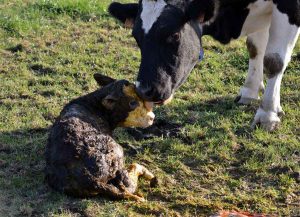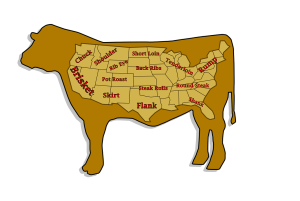Joaquín Ventura & Nuria García
Close to 50% of embryos are not viable seven days after fertilization in high-producing dairy cows. This suboptimal embryonic development is influenced by numerous factors such as animal genetics, disease, management, energy balance (influenced by diet, body condition, etc.), metabolic status, etc. They all determine changes in the uterine environment, oocyte quality and embryo development, which ultimately determine their viability.
If one could analyze in detail which of these factors adversely affect pregnancy viability to the greatest extent and be able to control them, then the number of pregnancies through insemination would increase, further shortening the interval between calving and the first fertile insemination.
In addition, higher quality embryos would be obtained by superovulation of cows during embryo transfer, thus increasing the pregnancy rates of this alternative reproduction technique. All these improvements would have a direct influence on farm profitability.
A team of researchers from Washington State University (USA) and the University of Calgary (Canada) conducted a study to determine the effect of body condition (BCS), the presence of subclinical endometritis and the concentration of various circulating metabolic markers (adiponectin, leptin, insulin, IGF1, tumor necrosis factor a, urea and interleukines 1b and 6) on the response to superovulation of embryo donor cows.
Fifty super-ovulated multiparous cows were assigned by tens to five groups according to their BCS (on a scale of 1 to 5):
- BCS1; 00 to < 2.50
- BCS2; 2.50 to < 3.00
- BCS3; 3.00 to < 3.50,
- BCS4: 3.50 to < 4.00
- BCS5: 4.00 to 5.00
After the superovulation treatment, all cows were randomly inseminated with two doses (separated by 24 hours) of frozen/thawed semen from three bulls with a conception rate of +4. Embryo collection was carried out seven days after inseminating for the second time, and blood and fluid samples obtained with the embryos to determine metabolic marker levels and whether subclinical endometritis existed.
The first factor that could be linked to the production and viability of the embryos was BCS of the donor cows, so that females in BCS2, BCS3 and BCS4 groups produced more eggs and embryos than those in BCS1 and BCS5 groups, and in addition, BCS2 and BCS3 groups produced more transferable embryos than the rest (table 1).
Relationship between circulating metabolic markers and body condition
Urea nitrogen concentrations in donor cows’ blood showed a linear association with BCS, with 11.8, 16.2, 17.4, 19.8 and 22.4 mg/dl for the five BCS groups, respectively. There was a quadratic association with the number of transferable embryos, with an optimal concentration of urea nitrogen in blood associated with the production of viable embryos in BCS3.
The number of polymorphonuclear neutrophils in the liquid recovered with the embryos, supposedly higher in cows with subclinical endometritis, was also related to their number and viability, so that donors with up to 6% polymorphonuclear neutrophils produced more embryos, which were more viable, than those exceeding that percentage: 7.4 per cow without polymorphonuclear neutrophils, 5.4 in cows between 1 and 6%, and 2.5 for cows with more than 6%.
Blood concentrations of adiponectin, leptin, insulin, IGF1 and tumor necrosis factor were higher in cows with moderate to good body condition (BCS2, BCS3 and BCS4) than in thin (BCS1) or obese (BCS5) cows. On the other hand, concentrations of adiponectin, leptin, IGF1 and insulin were higher in cows with up to 6% polymorphonuclear neutrophils in embryo recovery fluid, while tumor necrosis factor concentration and interleukins 1b and 6 were higher in cows with subclinical endometritis (more than 6% polymorphonuclear neutrophils).
Conclusions
From this study it was concluded that both BCS and inflammation of the endometrium of donor cows influence the number and quality of embryos. It also established the relationship of concentrations of various plasma markers both with body condition and the presence of subclinical endometritis and with the production of viable embryos in superovulated cows.
Proper feeding management and effective monitoring of subclinical uterine infections, supported through the analysis of the metabolic markers measured in this experiment, can result in an improvement in the number and viability of embryos obtained by donor females during embryo transfer.
Reference
Kasimanickam R, Kasimanickam V, Kastelic JP, Ramsey K. Metabolic biomarkers, body condition, uterine inflammation and response to superovulation in lactating Holstein cows. Theriogenology 146 (2020) 71-79.
© 2021 Dellait Dairy Knowledge Center. All Rights Reserved.












